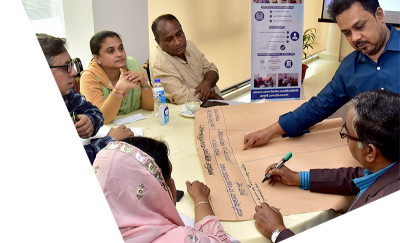

Until recently, discussions on productive use of energy (PUE) were more common in sectors such as agriculture and economic growth than in health. But progress in maternal and child health outcomes, combating infectious diseases, and other health priorities also requires co-investment in clean, reliable energy.
In our original Climatelinks blog post, we wrote about the need for integrated approaches to financing PUE solutions as part of ongoing efforts to scale clean energy access in the health sector. Demand for renewable options like solar-powered medical appliances and water pumps can increase and promote investments in small and medium enterprises and their supply chains, while boosting employment. The transition to renewables also moves the health system toward decarbonization and adaptation targets by reducing emissions, while enabling continuous service provision.
PUE for Health in sub-Saharan Africa
The need for PUE is immense in sub-Saharan Africa, where more than 100,000 health facilities lack access to reliable electricity. Large-scale initiatives like the Abt-led Health Electrification and Telecommunications Alliance (HETA) are working to change this reality and build health system resilience by supporting reliable access to electricity and internet connections powered by renewable energy sources. In HETA’s model, this shift will also support uptake of PUE products for health facilities and the surrounding communities.
The Health Sector Needs Integrated Solutions
To advance PUE product uptake in the health sector, access to finance is crucial. Panelists at an Abt webinar discussed priorities like the need to share information about equipment financing options with potential investors. PUE for health should be linked to national and local policies and capabilities, address local social and economic needs, and include local actors in climate and health decision-making. Investments in PUE for health facilities and points of care, supported by a diverse coalition of funders, hold the triple promise of improved health outcomes, economic well-being, and resilience within and beyond the health system.
As this conversation about the intersections of climate and health continues, Abt is exploring ways that health policymakers and stakeholders can work together. This includes our participation at the 2023 Prince Mahidol Awards Conference, where we’ll present on how the use of information generated from cost-benefit, co-benefits, and general economic analyses of climate impacts can lead to cost-effective climate actions with dual benefits to public health.
Visit Climatelinks to read the original blog post, “Why We Should Invest in Productive Use of Energy for the Health Sector.”

Abt Global is exhibiting and presenting at Health Systems Research (HSR) in Nagasaki, Japan in November 2024.

Abt will join governments, the private sector, and civil society at the 29th Conference of the Parties to the United Nations Framework Convention on Climate Change (COP29) this November to accelerate climate action.

Abt Global can help public-and private-sector actors take decisive action to finance equitable climate mitigation and adaptation strategies.

Several years ago, my family took in a young man and his elderly mother after a flood destroyed their home.Eleven inches of rain had fallen in two days on tiny Painesville, Ohio, a community of 20,000 not far from Lake Erie. The Grand River had swollen to nine times its size and spilled into a row of low-income condominiums. Floodwater pushed past first-floor ceilings, in some cases rising to 17 feet.

